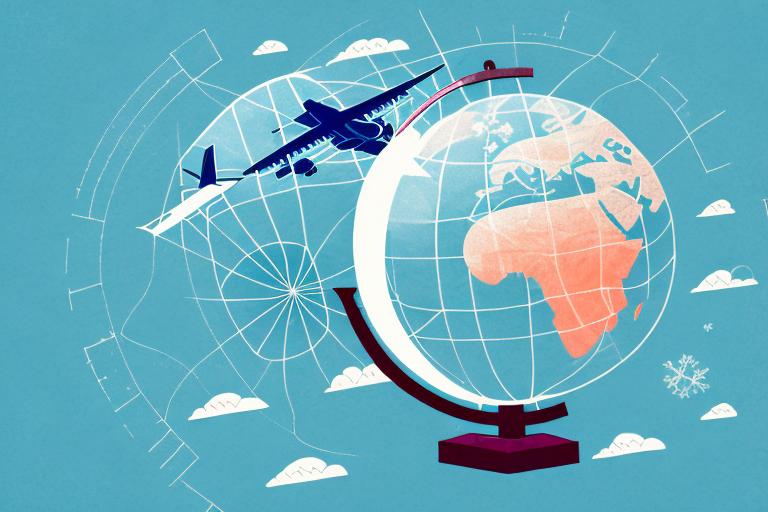Choosing the Best Time to Travel: An In-Depth Guide
For many, traveling is an exciting and enriching experience. Whether it's a well-planned vacation or an impromptu weekend getaway, traveling allows us to explore new places, cultures, and experiences. As anyone who's ever traveled knows, timing can be everything. The time of year you choose to travel can determine everything from the weather and prices to the number of crowds and tourist activities available. In this article, we will explore the best time to travel by examining both peak and off-peak seasons, and how to make the most of your travels regardless of when you choose to go.
Understanding Peak and Off-Peak Travel Seasons
Benefits of Traveling During Off-Peak Season
Traveling during the off-peak season typically refers to times of the year when there are fewer tourists and visitors. Often, this corresponds to times when the weather may not be ideal or when certain businesses or attractions may be closed. However, there are several benefits to traveling during off-peak seasons:
- Cost Savings: Prices for flights, accommodations, and activities are generally lower during off-peak times. According to the World Tourism Organization, travelers can save up to 30% on accommodations by traveling during these periods.
- Less Crowded Destinations: With fewer tourists, you can enjoy a more relaxed experience, shorter lines, and greater access to attractions.
- Authentic Experiences: Engaging more with locals and experiencing the destination's culture without the distraction of large tourist groups.
- Unique Local Events: Some festivals and events occur only during the off-peak season, offering a unique perspective on local traditions.
Pros and Cons of Traveling During Peak Season
Peak season refers to times when destinations are at their busiest, typically due to ideal weather conditions and popular festivals or events. While peak season can offer many benefits, such as a wider range of tourist activities and events, it also comes with some downsides:
- Higher Costs: According to data from Kayak, flight and accommodation prices can increase by 20-50% during peak times.
- Crowded Attractions: Popular sites may be overwhelmed with tourists, reducing the quality of the experience.
- Limited Availability: Accommodations and tours may book up quickly, limiting options for travelers.
- Ideal Weather: On the plus side, peak seasons often coincide with the best weather, enhancing outdoor activities and sightseeing.
Strategies to Save Money on Your Travels
Book Early or Last Minute
Booking your travel plans either well in advance or at the last minute can help you secure better deals. Early bookings can lock in lower prices, while last-minute deals may offer significant discounts as providers aim to fill remaining slots.
Travel During the Week
Flights and accommodations are often cheaper during weekdays compared to weekends. According to Travel + Leisure, flying on Tuesdays and Wednesdays can result in savings of up to 15%.
Compare Prices
Utilize price comparison websites like Skyscanner or Booking.com to compare prices across multiple airlines and accommodation providers, ensuring you get the best possible rate.
Top Destinations to Visit During Low Season
Traveling during the low season can open up opportunities to visit popular destinations with fewer crowds and lower prices. Here are some top choices:
Mexico
Known for its beautiful beaches, rich history, and vibrant culture, Mexico offers a variety of experiences. Traveling during the off-peak season can mean cheaper prices and fewer tourists, allowing for a more relaxed exploration of cities like Mexico City, Playa del Carmen, and Oaxaca.
Europe
European cities such as Prague, Budapest, and Vienna are excellent choices during the low season. According to the European Travel Commission, visiting these cities in the spring or autumn can provide a more authentic experience with milder weather and reduced tourist traffic.
United States
In the United States, destinations like Yellowstone National Park and New Orleans are less crowded during the shoulder seasons. For example, visiting Yellowstone in the fall offers stunning foliage with fewer visitors compared to the summer months.
The Impact of Festivals, Events, and School Holidays on Travel
Festivals and Events
Festivals and events can significantly influence travel patterns. Major events like the Edinburgh Fringe Festival or the Cherry Blossom Festival in Japan attract millions of visitors, driving up prices and crowds. Planning your trip around these events can either enhance your experience or prompt you to seek quieter times.
School Holidays
School holidays, particularly during the summer months, can lead to peak travel seasons as families take vacations. This period often sees a spike in tourist numbers and prices. If traveling with children, considering off-peak times or shoulder seasons can help avoid the crowds and reduce costs.
Planning and Booking Your Trip
Booking Flights and Accommodations
Timing is crucial when booking flights and accommodations. For peak seasons, it's advisable to book several months in advance to secure the best rates and availability. Conversely, for off-peak seasons, last-minute bookings might offer substantial discounts.
Navigating Popular Tourist Spots
If visiting a popular destination during peak season, strategic planning can improve your experience. Early morning or late evening visits to major attractions can help you avoid the largest crowds. Additionally, exploring lesser-known sites can provide a more intimate and enjoyable experience.
Conclusion
The best time to travel depends on various factors, including your budget, preferences, and the destination you wish to explore. By understanding the dynamics of peak and off-peak seasons, leveraging money-saving strategies, and carefully planning your itinerary around festivals and school holidays, you can optimize your travel experience. Whether you seek vibrant events or a peaceful getaway, timing your trip right will help you make the most of your adventures and create lasting memories.






















